It was all very well to acquire and listen to enemy transmissions on earphones, making copious notes of what the panoramic adapters and signal analyzers were indicating on the scopes, but a stubby pencil and clipboard is no match for an electronic or optical means of recording information in real time - even in 1944. Because of the vibrating platform of an aircraft, this presented a certain number of challenges in using the recording media, a variety of which was available in the early 1940s. The alternatives were not what one would call wide-band capabilities, but they did the job to an impressive extent. At the time, today's magnetic tape was barely in the Allied initial production phase (although the Germans deployed it widely early in the war) that was not fielded in American aircraft by the end of the war.

RD-15/ANQ-1 Wire recorder with cover removed. Note 60 minute cartridge on front for quick replacement in flight.
The photo above is of the 'gold standard' for airborne audio recording by the end of the war - the ANQ-1 wire recorder - used well into the 1950s. It was designed primarily to couple with the audio outputs of countermeasures receivers of the era outlined elsewhere on this website, but of course it could be used with any program source not requiring high fidelity. The record head was contained within the cartridge so that restringing of the wire during changes was eliminated. Swapping of the cartridge takes less than 20 seconds.
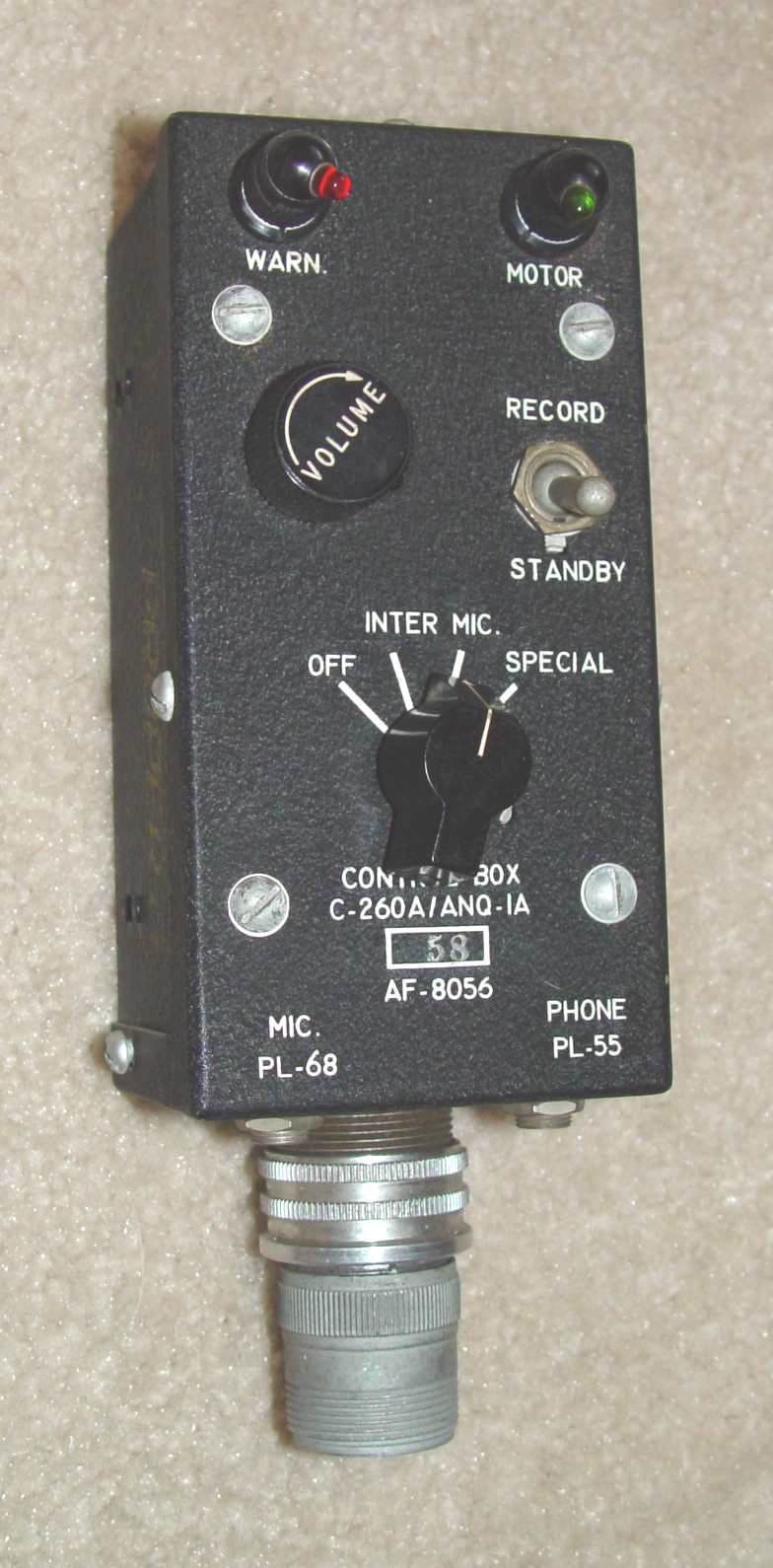 The control box for the ANQ-1 is shown at left. The curious "chameleon" eye
pilot lights were among the first to employ the tiny 28 volt bulbs still used in
countless 5.75" modular avionics control heads over the years.
The control box for the ANQ-1 is shown at left. The curious "chameleon" eye
pilot lights were among the first to employ the tiny 28 volt bulbs still used in
countless 5.75" modular avionics control heads over the years.
C-260A/ANQ-1 wire recorder remote control box
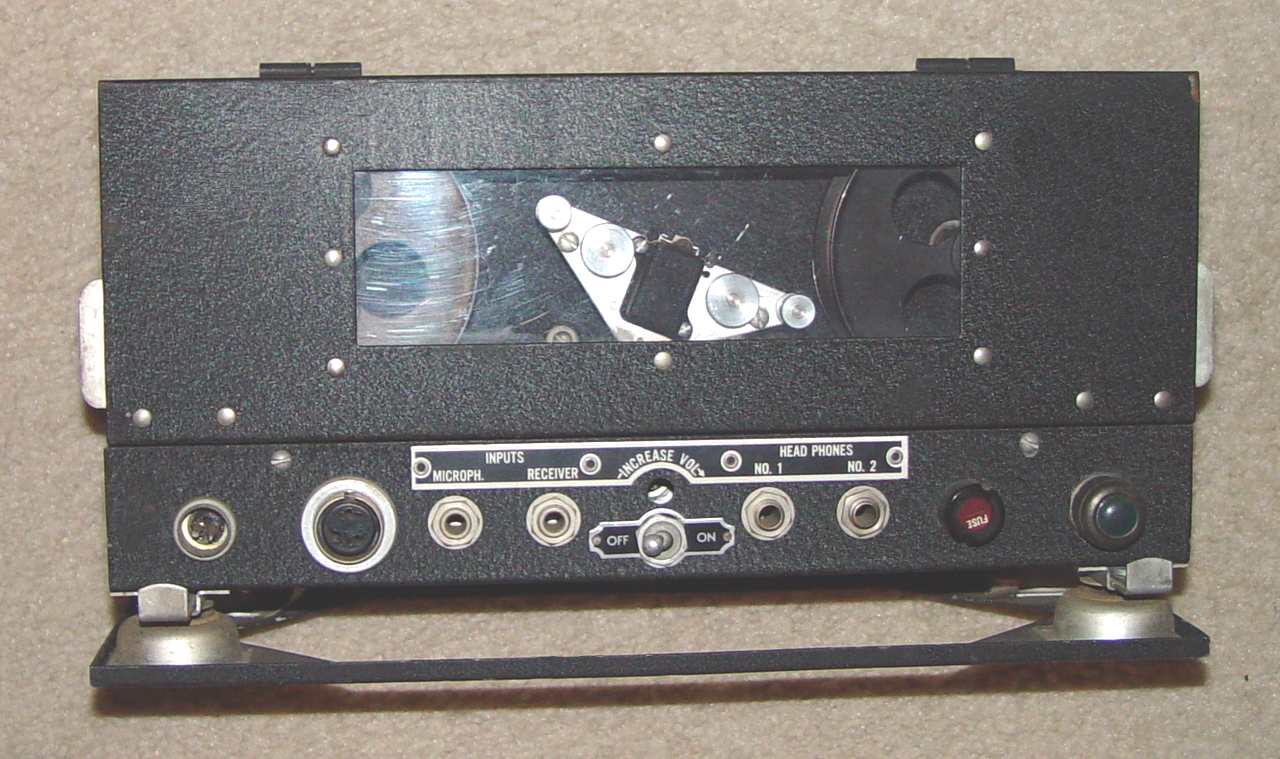
GE Model 20N Navy wire recorder (13-A-3c)
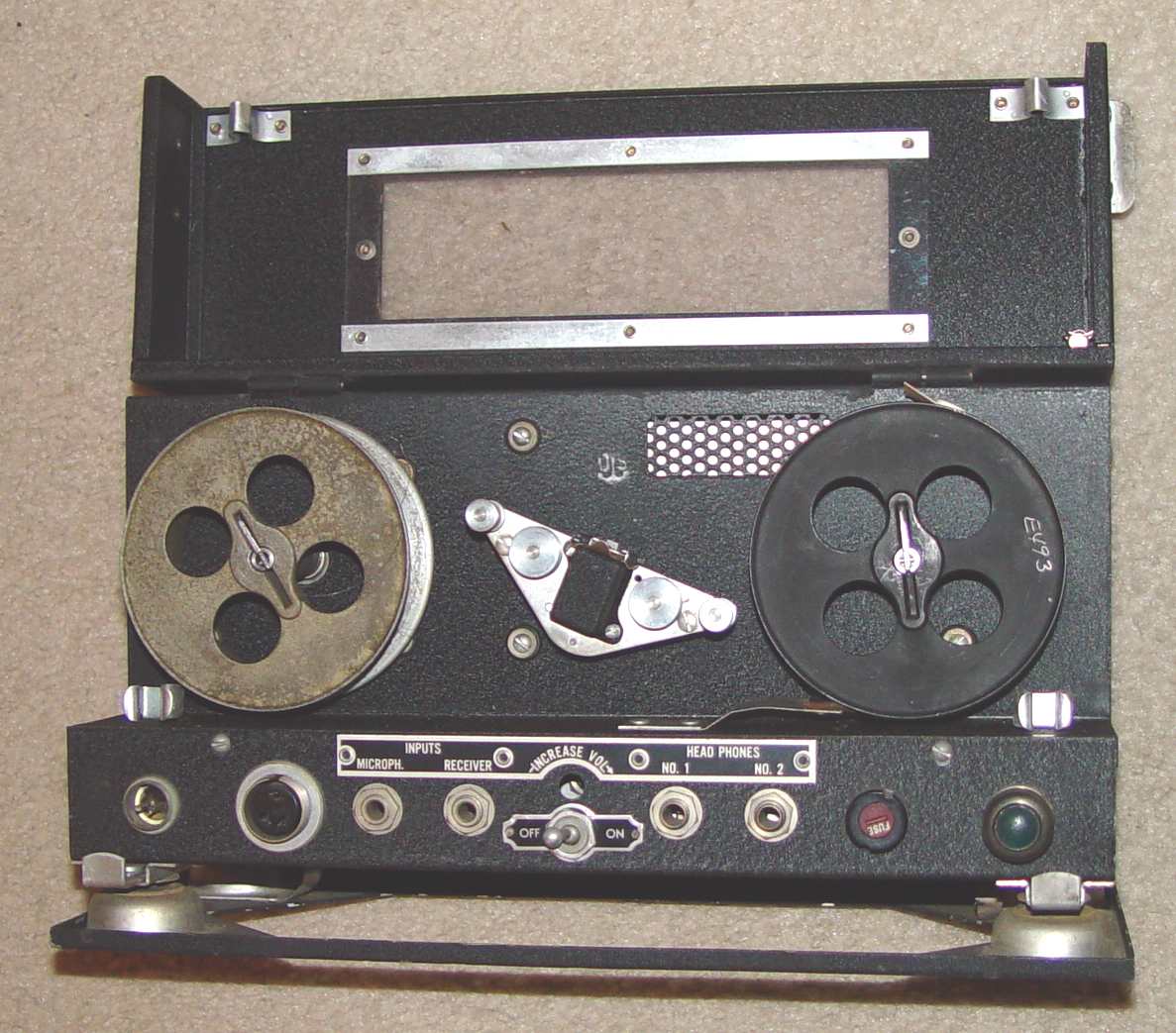
The set above is the less common 20N series of wire recorder that was used by the Navy for the same purpose, as well as other roles like sonobuoy recording. It had the disadvantage of requiring the operator to restring a new wire reel every time the previous reel was full of data. The connector at far left is for 28 volts DC, while the one to its right is used for a remote control "run/stop" switch or microphone. The schematic for this recorder is located here.
*************************************************************************************************
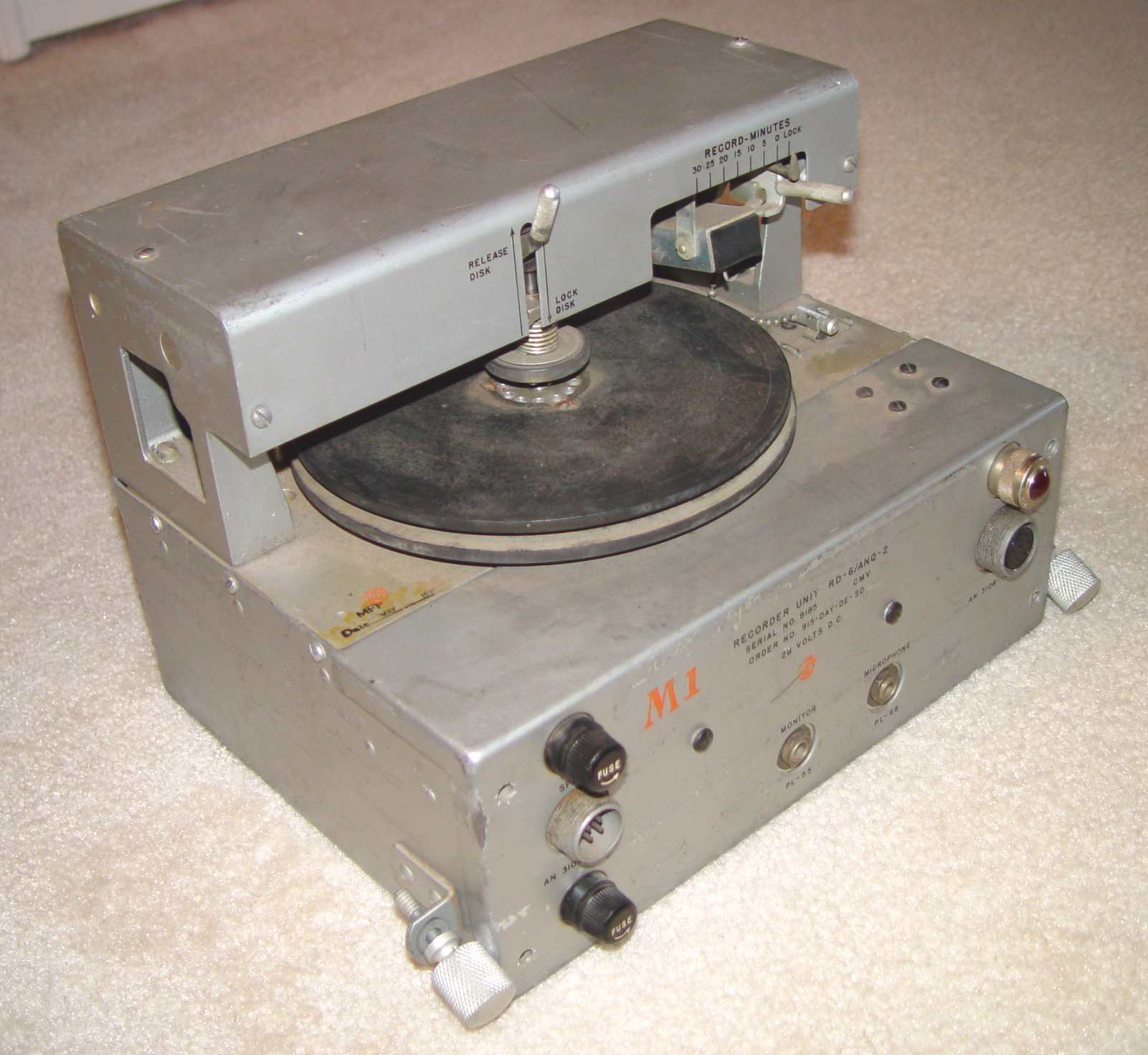
RD-6/ANQ-2 Acetate disk recorder
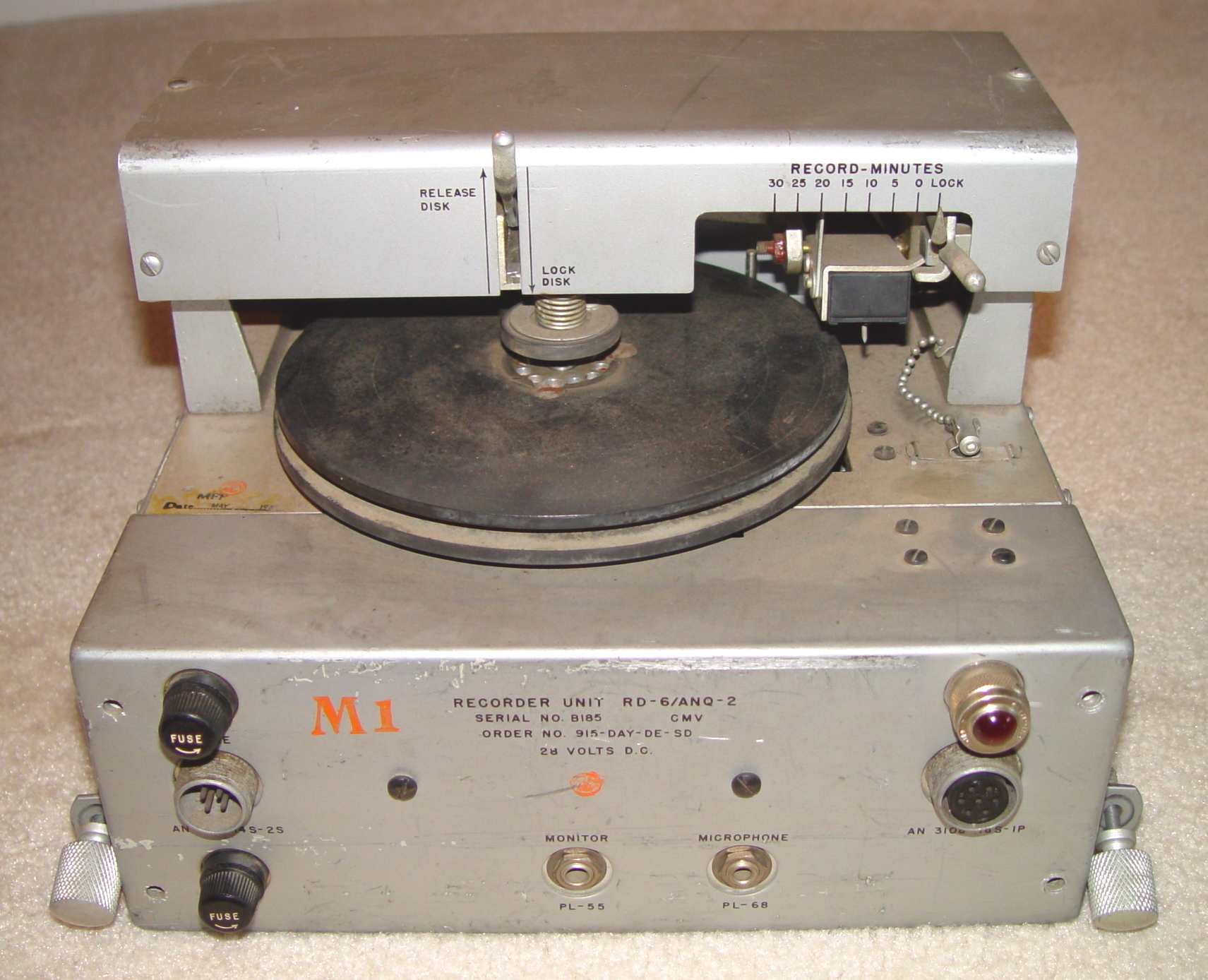
The recorder above was intended to extend the frequency response of recorded signals by recording on a small 7 1/4" black laquer coated aluminum disk, sometimes called an acetate recording. It appears to be a Memovox design (based on the manual for the original contract) that closely resembles the postwar SoundScriber dictation machine, though the complex Memovox constant velocity stylus system used with 18" acetate disks isn't a part of this design. It used a special shock mount to attempt to decouple the vibration inherent in a WWII piston driven aircraft from the recording head. Note the thirty minute record time despite the small diameter turntable - this was a low speed recorder indeed, since the 30 minutes is recorded in a band about 1.5" in width. It was chosen for a special duty on August 6, 1945, when this type of recorder was used to record the interphone traffic of flight crew reaction to the atomic weapon delivery over Hiroshima. This particular one will be restored, a shock mount fabricated, and go into the radar compartment of the Enola Gay, clamped to the plywood board at the upper right of the countermeasures equipment racks. (See Enola Gay Countermeasures Position for the location. The receiver seen at upper right on that page will be moved to lower left to free up the position.)

The photo above is a good shot of the operational use of such a recorder, this one from the AFHRA 509th files at Maxwell AFB.
 Here is the control box for this recorder. Unfortunately it appears that I will
need to make one out of a donor BC-347 amplifier hulk unless someone can come up
with an original. A manual excerpt is located here.
Here is the control box for this recorder. Unfortunately it appears that I will
need to make one out of a donor BC-347 amplifier hulk unless someone can come up
with an original. A manual excerpt is located here.
C-99/ANQ-2 disk recorder remote control box
Another unobtanium part has been the shock mount for the recorder. Scaling off of the drawing below, I am in the process of fabricating this mount.
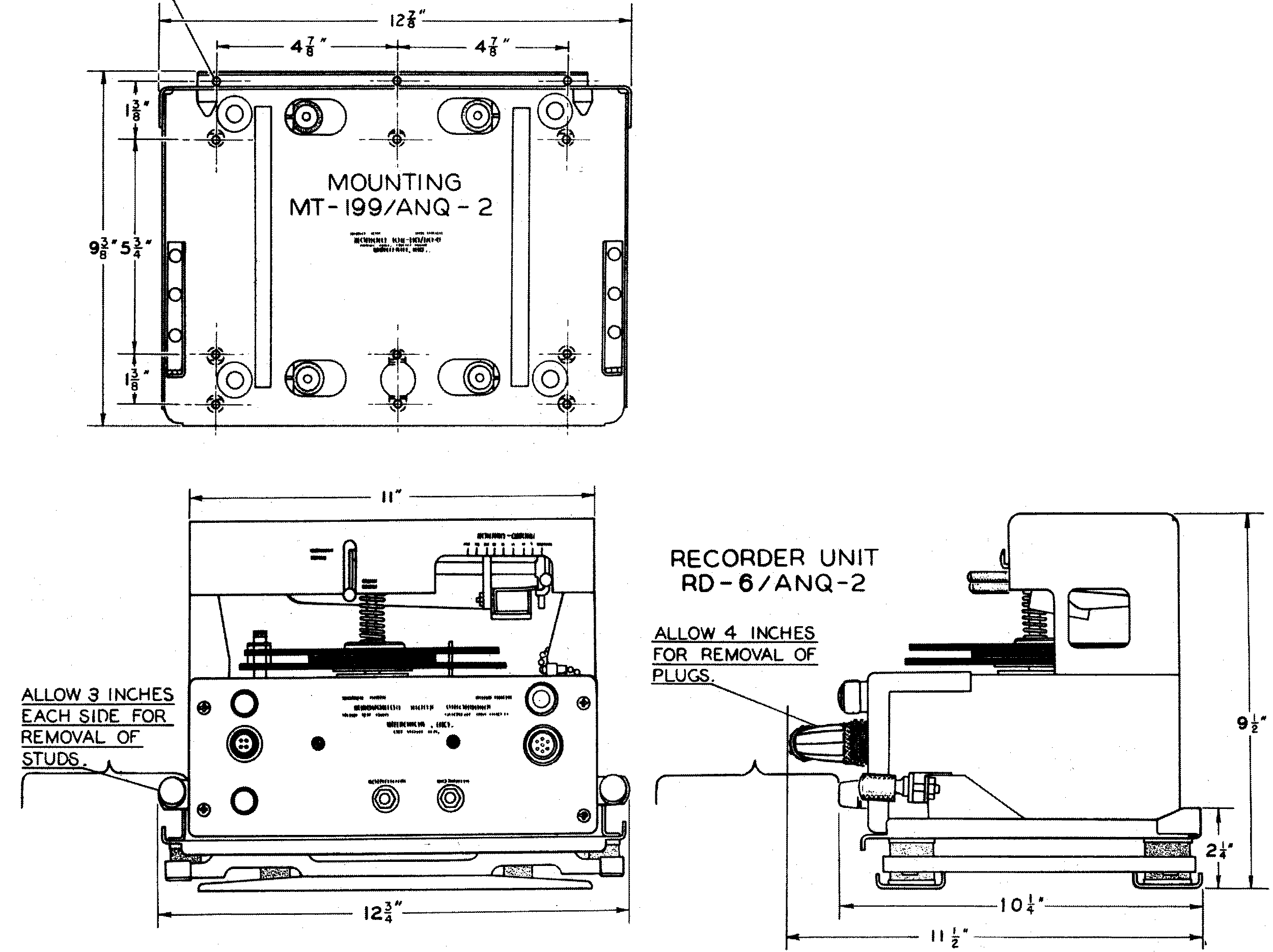
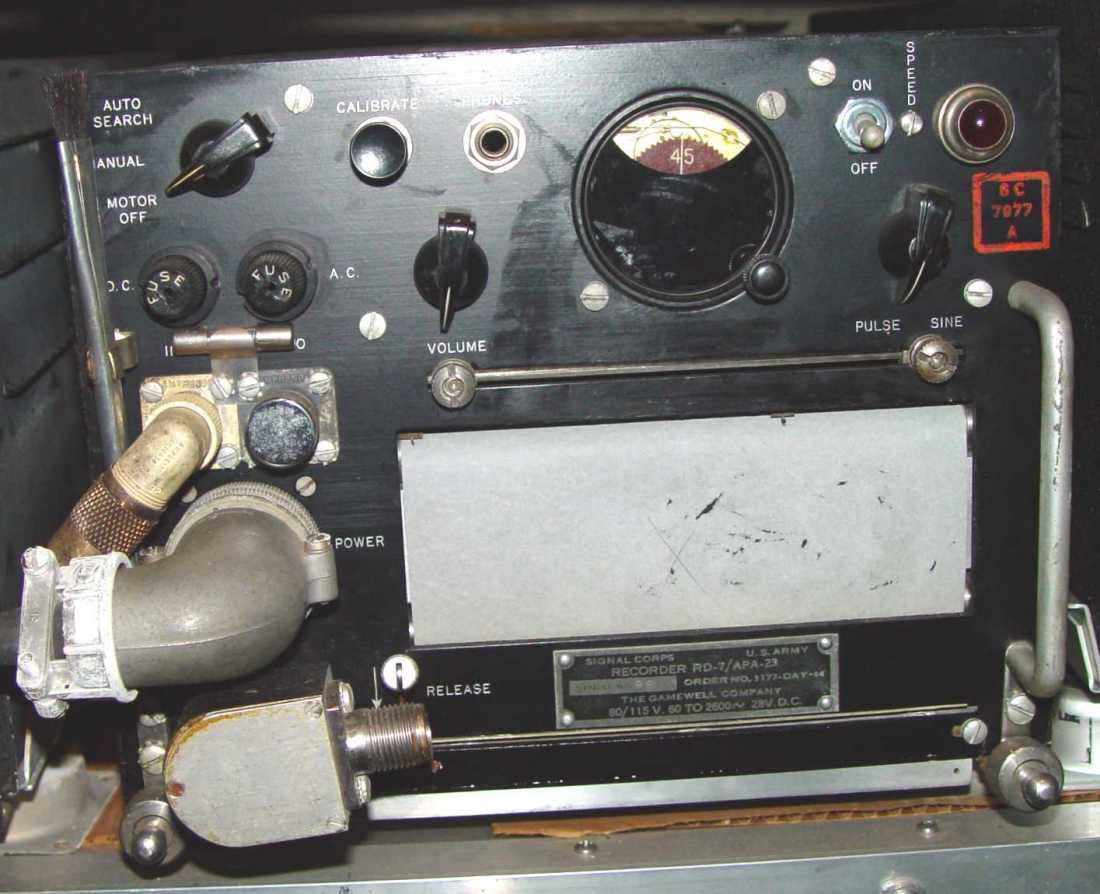
RD-7/APA-23 thermal paper recorder
The chart recorder above was a significant aid to signals analysis in terms of capturing details of frequency and interception time. Details of the signal needed to be recorded by some other device, however. It was mechanically linked to the tuning dial of whatever receiver was being used by means of a "speedometer" cable, and calibrated with frequency being the horizontal axis. Time of interception was indicated by the vertical axis on the paper, with the clock mechanism at upper right slowly driving the reel of paper along during the flight. Lower frequency phenomena was visible as small perturbations of the trace at whatever position on the paper the thermal writing head happened to be based on time and frequency of the receiver, thus giving in effect a Z axis recording of a signal visible in a separate analyzer. Since some signals were extremely brief, this capability would often provide the only later hint of its characteristics.
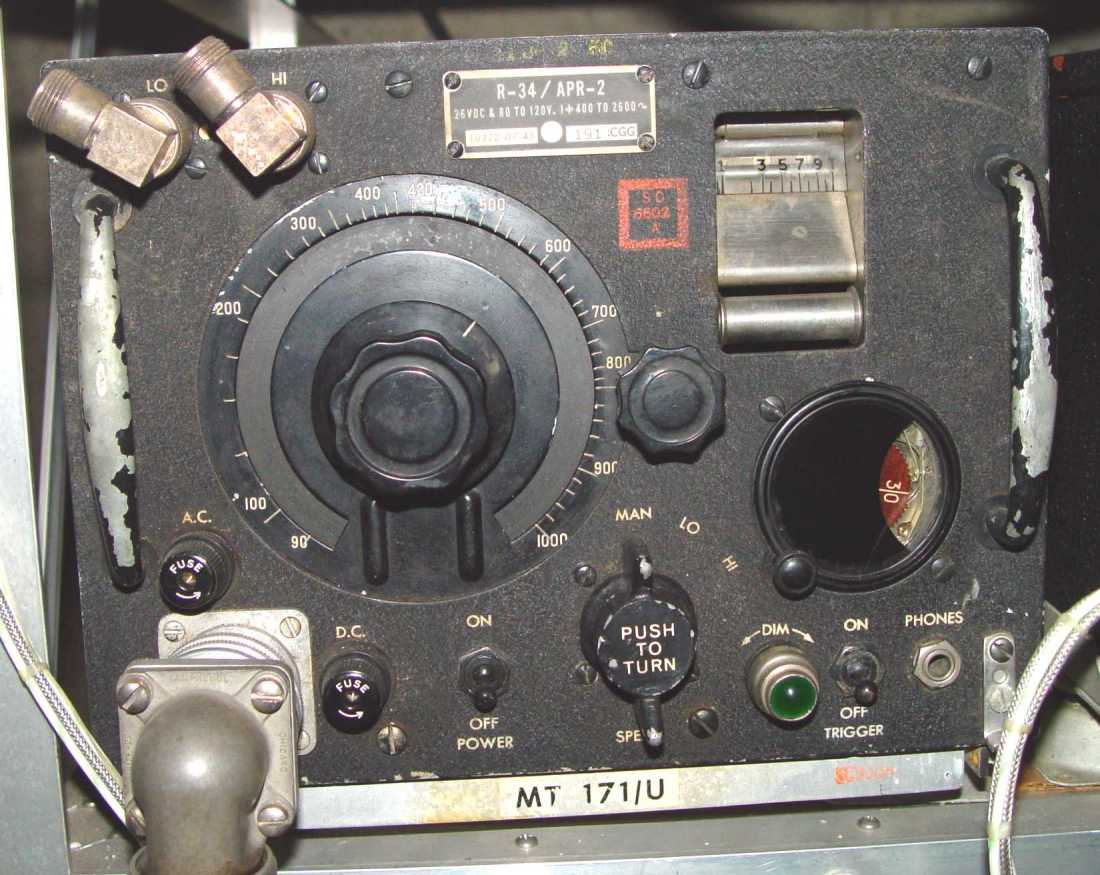
R-34/APR-2 receiver. Note small thermal paper recorder above the paper driving clock mechanism.
The example above is the only one I know where a recorder was built as an integral part of another piece of airborne equipment. This surveillance receiver is discussed at more length at APR-2.
*************************************************************************************************
There were two types of optical recorders designed for use on countermeasures scopes, in still camera and motion picture camera versions. I cannot find any reference to being capable of connection to the 3" scopes that formed the bulk of of the countermeasures indicator inventory described in this website (at the bottom of this page). They appear to have been adapted from cameras used for the 5" radar indicators, which would have made them useful only to scopes like the APA-17 DF indicator or the ARQ-5 and ARR-8 panoramic receivers, to name the more common instruments. The inconvenient format, unwieldy in application and requiring processing at the end of the flight, evidently made them less popular except for very specific targets. Examples are extremely rare today.
